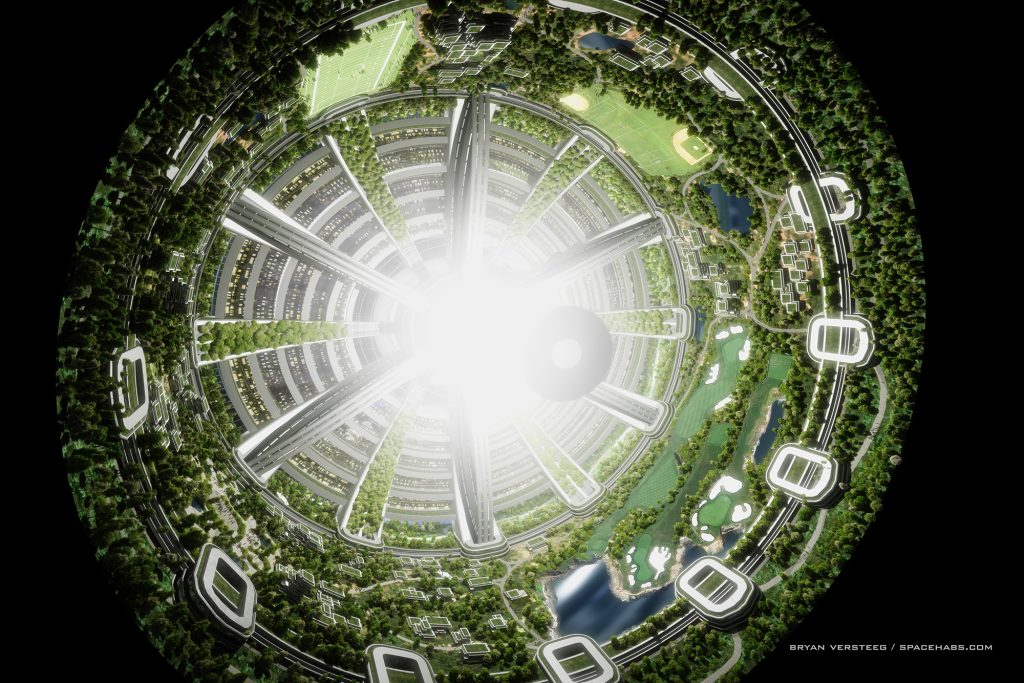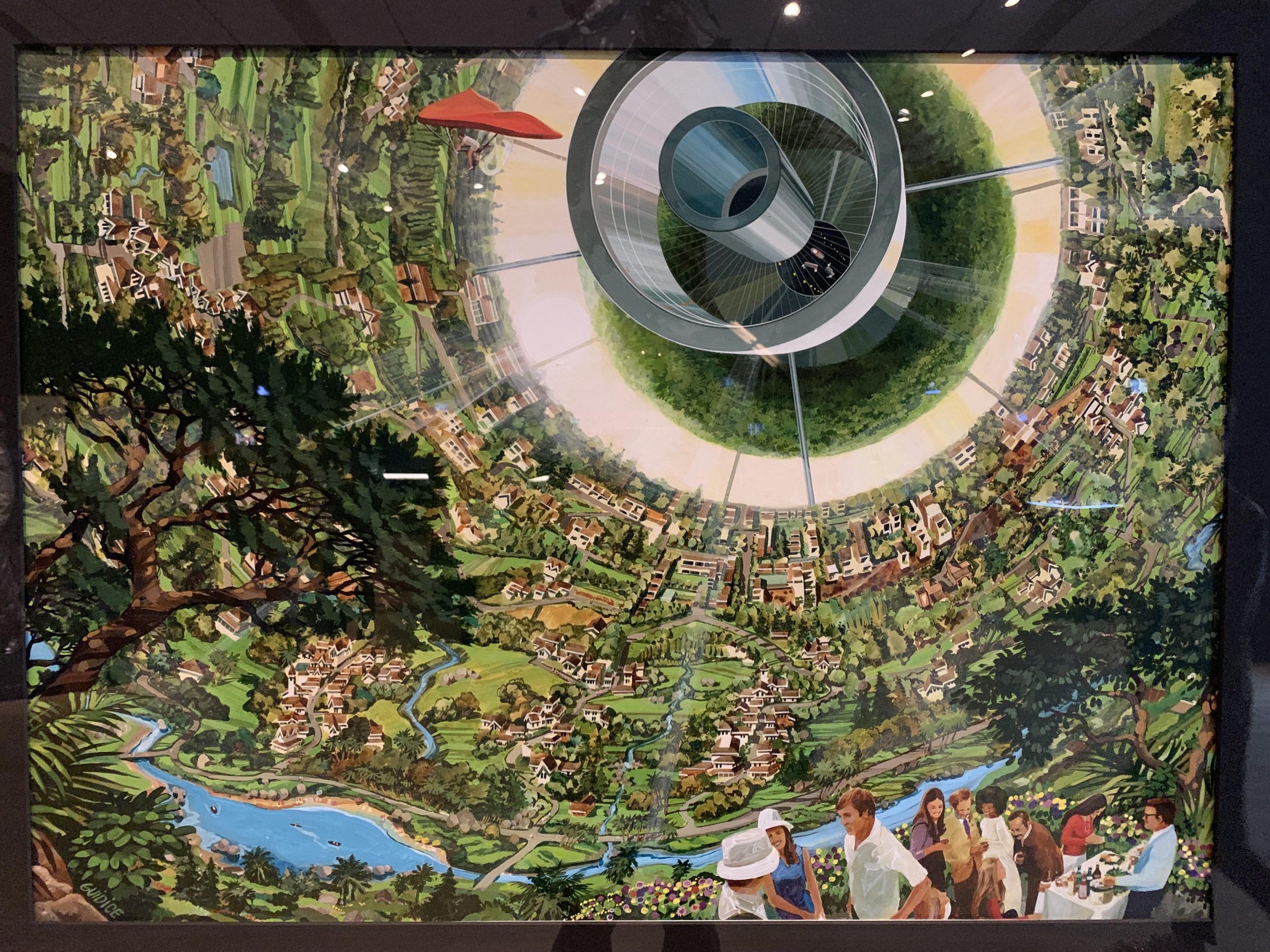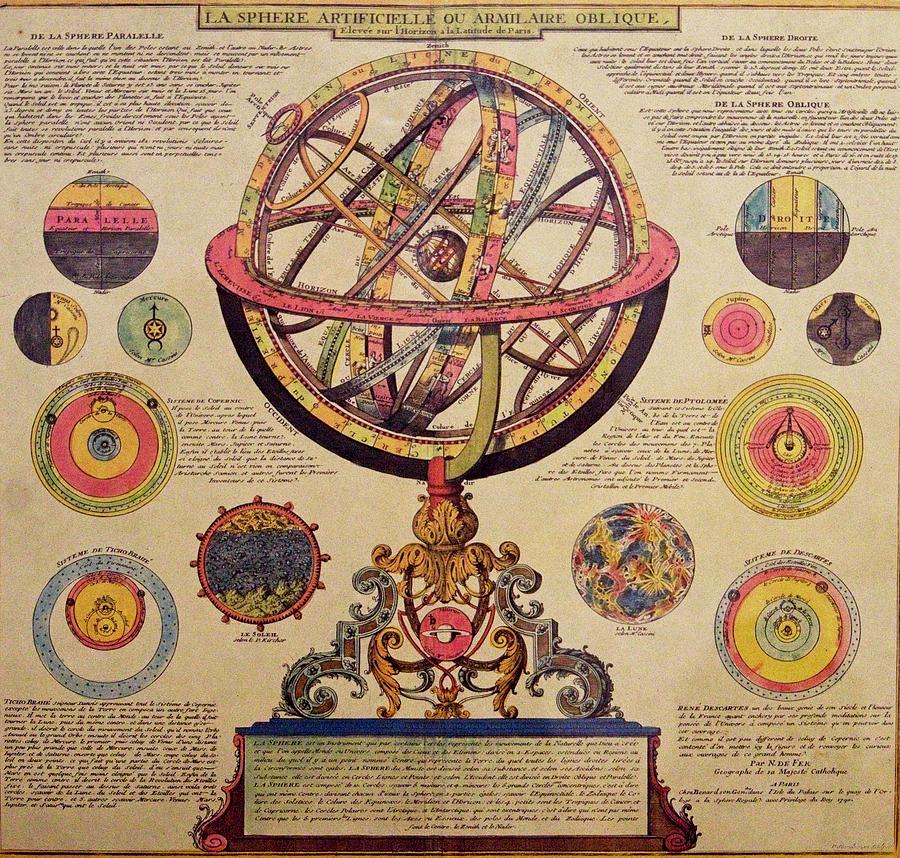NASA’s Cylindrical Colonies or Hollowed Sphere Colonies began as a concept in the 1970’s. This concept was revisted and re-engineered again in the 2000’s with Kaplana One. These designs were part of a larger vision for “space” colonization, where humanity would create self-sustaining habitats in space. The idea was to construct massive cylindrical or spherical structures, rotating to create artificial gravity using centrifugal force, with their inner surfaces terraformed to mimic Earth-like conditions.
Kaplana One (as seen above), named after the late NASA scientist and visionary, Dr. Kaplana Chawla, is a proposed cylindrical space colony. The design is based on the principles of a Stanford Torus, but with a twist. Instead of a donut shape, Kaplana One is envisioned as a long cylinder, rotating to create artificial gravity through centrifugal force. *Side Note* This concept is almost identical to what is displayed in the intro to Game Of Thrones.
The cylinder is proposed to be about 1 mile in diameter and 20 miles long, capable of housing thousands of inhabitants. The interior surface of the cylinder, where the inhabitants would live, is designed to mimic an Earth-like environment. It would have landscapes, bodies of water, and structures built to accommodate human life.
One of the most striking features of Kaplana One is the artificial sun at the center. This is not a sun in the traditional sense, but rather a system of mirrors and lights designed to simulate sunlight. The light source would be located along the central axis of the cylinder, with a series of mirrors reflecting and diffusing the light to mimic the day-night cycle on Earth.
The light source would be powered by solar panels on the exterior of the colony, harnessing the abundant solar energy in space. The light would be diffused evenly across the interior surface of the cylinder, creating a sense of natural daylight. At “night”, the light would be dimmed, simulating the setting of the sun.

All of this begs the question. Why design it this way adhering to the almost identical model of Cellular Earth Theory and not stick with their “tried and true” model of Earth where we live on the outside? Because from a natural holistic stand point, this model makes zero sense and would be ridiculous to recreate. It would be the equivalent to building a house and living on the roof!
Both concepts challenge our conventional understanding of habitat. In the Cellular Earth Theory, the Earth is not a solid sphere, but a hollow one, with life existing on the inside. Similarly, NASA’s Cylindrical Colonies would also be hollow structures, with life existing on the interior surface.
Secondly, both concepts propose a self-contained, self-sustaining ecosystem. In the Cellular Earth Theory, the Earth is a living organism, with its own life force and consciousness. Similarly, NASA’s Cylindrical Colonies would also be self-sustaining, with their own ecosystems.
Thirdly, both concepts suggest a redefinition of our relationship with the cosmos. In the Cellular Earth Theory, the universe is not something ‘out there’, but something ‘in here’, within the Earth and around us. Similarly, inhabitants of NASA’s Cylindrical Colonies would also experience the universe from an ‘inside-out’ perspective, with the stars and galaxies visible on the interior surface of the habitat.




